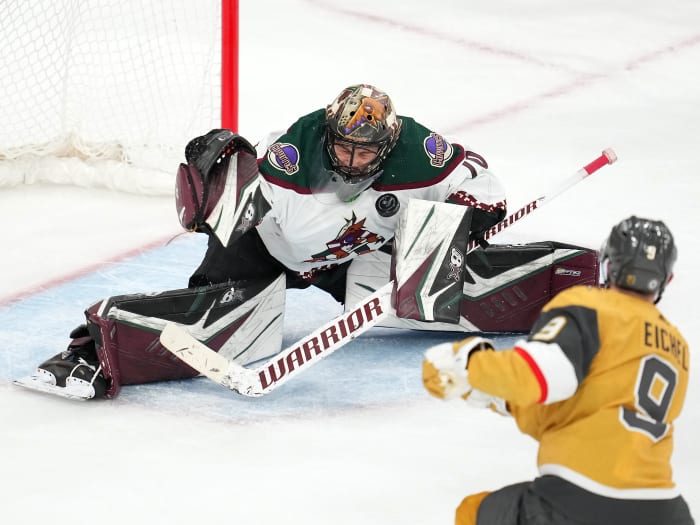This is the second in THN.com’s new NHL-team-by-team analysis prior to the start of the 2022-23 regular season. In this new series, we’re asking Three Burning Questions for every team in the league.
Today, we’re looking at the Arizona Coyotes:
THREE BURNING QUESTIONS FOR THE COYOTES IN 2022-23:
1. How bad will the Coyotes actually be? Bad. The correct answer here is, “bad”. Like, Emperor Palpatine from “Star Wars” bad. Cruella Deville bad. George Thorogood bad. Bad bad. It’s really that simple. This is not to suggest there won’t be positives to take from the upcoming season. GM Bill Armstrong went scorched-earth in his rebuild, to the point they currently have exactly one NHL goaltender in Karel Vejmelka, and he is a sophomore NHL netminder whose numbers last season (including a 3.68 goals-against average and .989 save percentage in 52 career NHL games) do not indicate he’s the next coming of Carey Price. But Armstrong believes in the long-game rebuild, and he is amassing a ton of draft picks and young players for the future. Time will tell if that plan pans out.
The problem, of course, is the present. The Coyotes have no discernible depth, unless you count thirtysomething NHLers long past their “best-by” dates (Zack Kassian, Andrew Ladd, Nick Bjugstad). They’re likely to get even worse, once Armstrong moves defensemen veterans Jakob Chychrun, Shayne Gostisbehere, and Troy Stecher by or before the trade deadline. They are going to rival the Chicago Blackhawks for the worst team in the league this season, and they may win fewer than the 25 games they won in 2021-22. Absent a miracle worthy of a Vatican investigation, it’s going to get extremely ugly for the ‘Yotes this year.
2. Who is going to attend games at the Coyotes’ new home arena? Sure, there are Coyotes diehards who will follow the franchise wherever it moves in an attempt to be financially viable, but Arizona’s relocation to a 5,000-capacity-seat rink at Arizona State University is going to be extremely negative optics-wise. It’s going to be a more intimate environment, and the organization and league can try to polish it as hard as they can, but what happens when the Buffalo Sabers show up to play on Dec. 17? How many fans do they think are going to be racing to the rink to see that game?
Even worse, the schedule is set up to make the Coyotes a forgotten force for the first two months of the regular season. Consider: of Arizona’s first 24 games this coming year, 20 will take place on the road, including a six-game trip to start the season. That’s an astonishing number, and it’s going to make life very difficult for the Coyotes’ marketing department. How are you going to attract even a modicum of new fans when you’re not around until mid-December?
Ultimately, the Yotes need to find an NHL-caliber rink in which to play, but they’re now locked into the ASU building for the next three years. That is a horrendous stretch of time to be in a rink that is smaller than many Canadian junior hockey team arenas. If they can grow their fan base this way, good for them. But it’s not going to be anything close to a cakewalk.
3. When should we expect the Coyotes to be a playoff team? Certainly, not this year. Almost certainly – and even if they win the draft lottery next spring and acquire the No. 1 overall pick, with which they’ll select phenom Conor Bedard – not next season, either. The Central Division has too many good teams to allow the Coyotes to sneak up the standings and earn a playoff berth anytime soon.
That may be hard to swallow for Arizona fans, but professional and professional hockey observers don’t see a linear path to competitiveness for this franchise at the moment. Stranger things have happened than the possibility of an upstart Coyotes lineup making some noise in the next couple of years, but there’s a reason why there are so many skeptics regarding this organization. They’ve been mismanaged for years, and their ownership isn’t prepared to spend to the salary cap ceiling to suddenly give them the depth they so desperately need (nor are there a bunch of in-their-prime talents ready to leave their teams for the Coyotes in the near future).
If that sounds especially stark and depressing, that’s because it is. Brighter days may eventually come to Arizona, but not so quickly that people should expect them before the halfway point of this decade.
.
